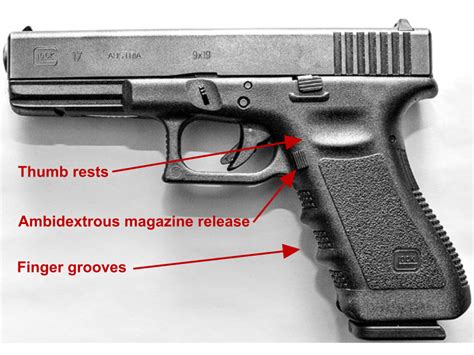Glock Generations: Easy Identification Tricks
Glock pistols have become ubiquitous worldwide, known for their reliability and simplicity. However, Glock has continuously refined its design over the years, resulting in several distinct generations of pistols. Knowing how to identify these generations can be crucial for collectors, enthusiasts, and even law enforcement professionals. This guide will provide you with simple, reliable tricks to identify Glock generations, avoiding complex technical jargon.
What are Glock Generations?
Before diving into identification, let's briefly cover what defines a Glock generation. Each generation represents a significant design update, incorporating improvements in ergonomics, reliability, and features. These changes, while sometimes subtle, are important for distinguishing one generation from another. The most significant differences lie in the trigger, sights, and various internal components.
Key Differences Between Glock Generations
While there are many subtle differences across the various generations, focusing on a few key areas will simplify the identification process:
1. The Trigger:
This is arguably the most significant visual difference between generations.
- Generations 1-3: Feature a smooth, slightly curved trigger with a noticeable "shelf" just above the trigger face.
- Generation 4: Introduced a redesigned, rough-textured trigger with a more pronounced, angled shelf, offering improved grip.
- Generation 5: Further refined the trigger, removing the finger grooves and featuring a smoother, more consistent pull.
2. The Finger Grooves:
The presence or absence of finger grooves on the grip is another excellent indicator.
- Generations 1-3: Typically feature prominent finger grooves molded into the grip.
- Generation 4: Retained the finger grooves, but offered models without finger grooves as well.
- Generation 5: Almost universally omits the finger grooves, providing a more customizable grip experience.
3. The Rail System:
The inclusion and type of rail system used for accessories also change across generations.
- Generations 1-3: Lacked accessory rails.
- Generation 4: Introduced a full-length Picatinny rail underneath the barrel for attaching lights, lasers, and other accessories.
- Generation 5: Retained the full-length Picatinny rail.
4. The Sights:
The sights also provide helpful clues:
- Generations 1-3: Often featured fixed sights.
- Generation 4: Often featured a more robust sight system and the option for adjustable sights.
- Generation 5: Often featured improved sights with a more robust design.
Identifying Specific Generations: Quick Reference Guide
Here's a table summarizing the key differences for quick identification:
| Feature | Generation 1-3 | Generation 4 | Generation 5 |
|---|---|---|---|
| Trigger | Smooth, curved | Rough, angled | Smooth, refined |
| Finger Grooves | Present | Present/Absent | Absent |
| Rail System | None | Picatinny | Picatinny |
| Sights | Fixed/Simple | Improved/Adjustable | Improved |
How to Identify the Generation of Your Glock: A Step-by-Step Approach
- Examine the Trigger: Is it smooth and curved, or rough and angled? This is your first and most reliable clue.
- Check the Grip: Are there finger grooves? The absence of finger grooves strongly suggests a Gen 4 (with some exceptions) or Gen 5.
- Look for the Rail: Is there a Picatinny rail under the barrel? If so, it's a Gen 4 or 5.
- Inspect the Sights: While less reliable than the trigger or grip, the style of the sights can offer further confirmation.
- Consult a Glock Serial Number Decoder (with caution): Online resources exist that attempt to decode Glock serial numbers to determine the generation. However, this information should only be used to confirm your findings from the physical inspection.
Frequently Asked Questions
What is the difference between a Glock Gen 4 and Gen 5?
The main differences lie in the trigger (Gen 5 features a smoother trigger without finger grooves) and the omission of finger grooves on the Gen 5 grip. Both generations include a Picatinny rail.
Are all Glock generations equally reliable?
Yes, all Glock generations are known for their reliability. Later generations incorporate refinements that enhance features like ergonomics and trigger pull but don't necessarily make them more reliable than earlier models.
Which Glock generation is the best?
The "best" generation is subjective and depends on individual preferences and intended use. Each generation offers advantages and disadvantages. Some prefer the simpler design of earlier generations, while others value the improved ergonomics and features of later models.
This guide offers a practical, visual approach to identifying Glock generations. Remember to always handle firearms safely and responsibly. While this information is intended to be helpful, consulting with a firearms expert is always recommended for any detailed questions about specific models.

